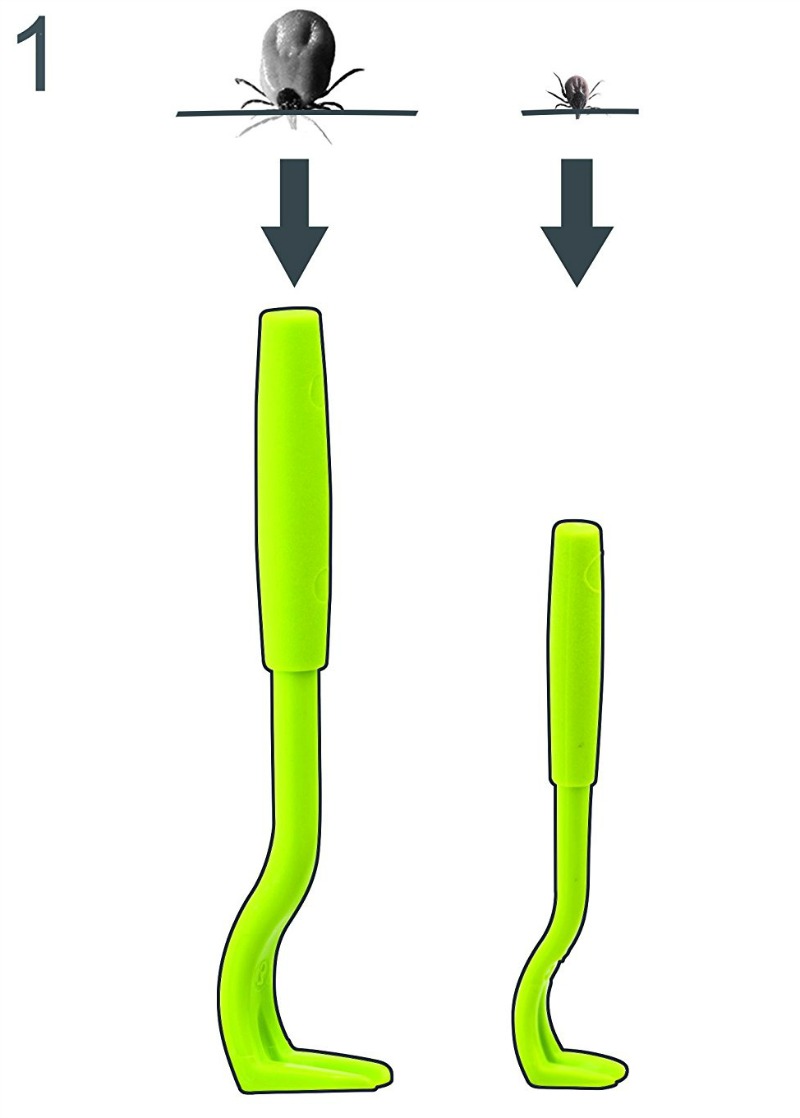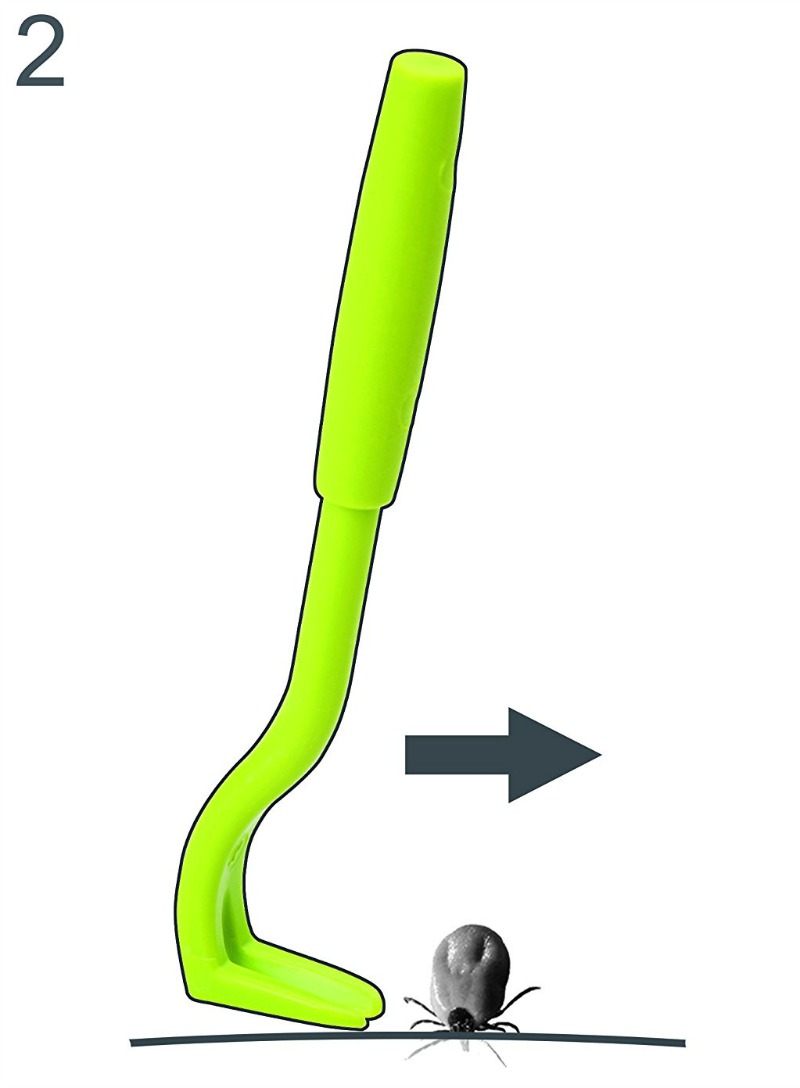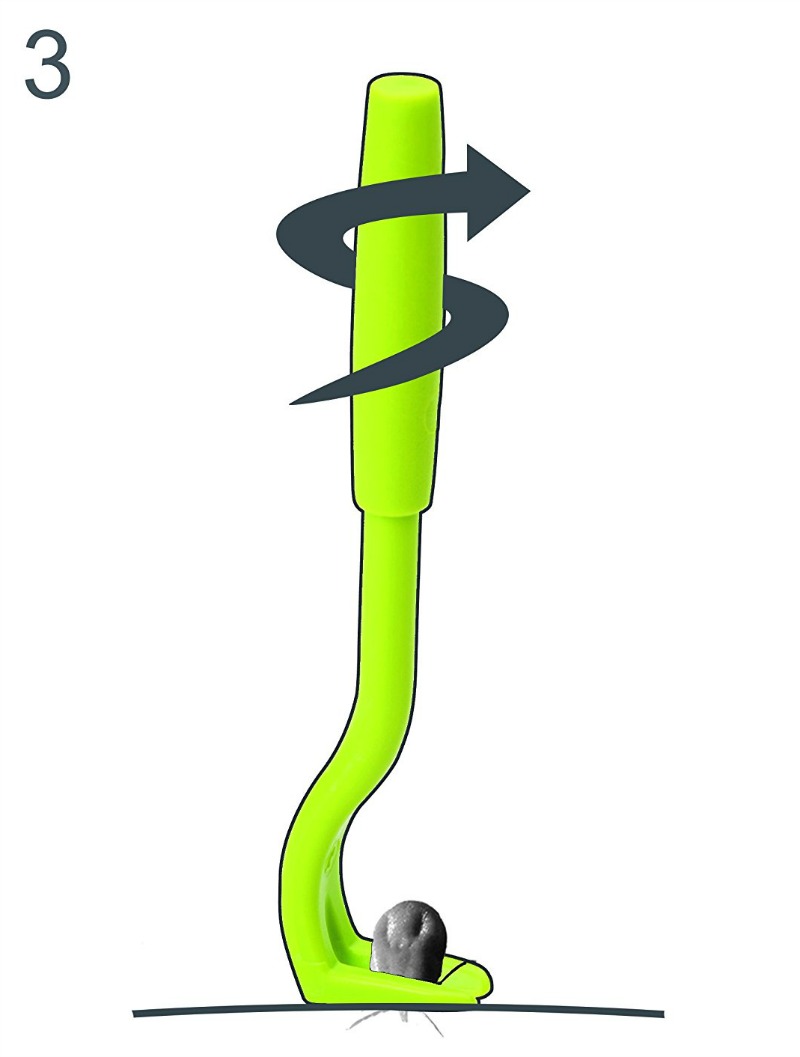Safe method to remove a tick without leaving the head stuck in the skin that works with small or large ticks and is easier than tweezers.

Each spring and summer, warmer weather and spending more time outside and camping outdoors increases the chances of exposure to nasty tick bites. The question is not “if” but “when” it will happen. And, when it inevitably does, how to remove a tick safely to minimize the chances of disease?
I have a friend who lives on a farm in Kentucky with his wife and five children. During tick season, he and his wife perform tick checks every night on all their children right before bathtime. They take ticks very seriously in their home because the Lyme disease carrying kind are very prevalent in their area.
It’s not just Lyme disease that is a potential risk either. The Journal of General Internal Medicine published an article by Susan Wolver, MD, and Diane Sun, MD, which identified a rising trend of red meat allergies from tick bites.
When one of my children was a fairly young baby and not even mobile yet, a tick lodged itself into the top of his head. Most likely, the tick dropped out of a tree onto his head, so don’t think your children are safe just because they aren’t hiking in the woods or walking in the grass!
If you discover that your child or pet has a tick that has lodged itself into the skin, here is the safest, easiest and quickest way to remove it.
How to Remove a Tick Safely and Quickly
The best way to remove ticks is using tweezers according to most authoritative sources. However, there is a new gadget called the tick twister remover that works even better.
My friend in Kentucky says that they used to use tweezers, but the tick twister is far superior and easier to use. It can be used to remove ticks from both pets and people.
Each tick twister tick removal set (it only costs about $6) has two removers inside: one large and one small. The different size is to allow for safe removal of both small and large ticks.
This ingenious device created by a veterinarian to safely remove ticks regardless of a person’s expertise has the following benefits:
- It is easier to use than tweezers especially for small ticks.
- It removes the tick without squeezing it, which greatly reduces the chances of disease transmission.
- It ensures the head and mouthparts of the tick are removed along with the body.
- It can be used for both large and small ticks.
Every home with children and/or pets should have one of these! It should also be included with camping equipment.
Safe Removal Steps. Better than Tweezers!
There are three steps for removing a tick using the tick twister.
First, you select which tick twister to use. If the tick is large, use the larger tick twister. If the tick is small, use the smaller one. Pretty simple!

Second, you grasp the tick between the head and body using the hook end of the tick twister. The picture below shows how to do it.

Third, simply twist the tick twister gently to easily and safely remove the entire tick out of the skin. That’s it!

After removing the tick, thoroughly clean the affected skin with alcohol. If there is any irritation, a dab of this herbal salve does wonders to quickly heal the skin.
Warning About some Tick Removal Recommendations
Some sources recommend pulling a tick straight out of the skin as the best method of removal.
This is very dangerous advice, because trying to pull a tick straight out will almost ALWAYS result in the head staying stuck in the skin. This is because ticks frequently lodge into the skin at an angle. They don’t usually burrow straight in perpendicular to the skin’s surface.
If you must use tweezers because you don’t have the tick twister remover available, be sure to pull the tick out at the same angle it went in.
This will give you the best shot at removing the head along with the body. In other words, grab the tick very firmly and close to the head as you can and pull out on a straight line but the same angle it burrowed in. I hope this makes sense.
It’s a little difficult to describe in words. This is the method taught to me by my Dad, who is a retired family doctor. Using this method, I’ve never left a tick’s head in the skin of any pet or person in over 40 years.
Of course, using the inexpensive tick twister is the best method of all. You don’t have to worry about angles – you simply twist the tick out of the skin!
How to Repel Ticks
This article describes the method for preparing an herbal yarrow tincture which is very effective at repelling ticks so you don’t have to remove them in the first place.
You ideally need to spray yourself every 2 hours or so.
Note that yarrow has been reputedly found by the US Army to be as effective as DEET in repelling ticks.








So, yesterday I must have jinxed myself. I was just telling a friend that we havent had any ticks in three years….and when I got home, low and behold, there was a tick on my two year olds pant line. Devastated! As our geographical area is heavily affected by Lymes Disease. I had just read another bloggers post covering this exact method. I tried the liquid soap for over 30 mins waiting for the tick to let go…and nothing! Im not sure if more damage was done because I allowed it to remain attached vs pulling it out with tweezers. I think the clear nailpolish method or alcohol works better. Next time I am going to try some essential oil like lavender and see how it compares. Just a tip for others….though its not ideal, it helps. I always grab a pen/marker and circle the spot where the tick was attached, that way I can observe it and watch for signs of Lymes (bulls eye rash or infection). Here’s to a summer of staying safe!
Actually, it is “Lyme” disease, named after Lyme Connecticut.
Please don’t put anything on the tick to make it detach. Just use an appropriate took and pull it off. You don’t want to leave it on, make it detach, or irritate it. See my earlier post that explains the biology behind this.
Agh. That should be “appropriate tool.”
Deer ticks, the ticks that are known for carrying Lyme disease, do not have a white spot. A tick with a white spot is a Lonestar tick. Both can carry the germs that cause a variety of tick-borne diseases.
As a person who’s had Lyme, and as a nurse, the best and safest method I have found for tick removal is a little gadget called a tick twister. You slide the device under the tick, and twist, no pulling, until the tick comes out. No mouthparts get left behind. I have a little jar of vodka (it kills them!) in my fridge containing lots of evidence in the form of dead ticks. http://www.ticktwister.com/
My parents always heated a pin with a match & poked the tick, it backed out fast.
You don’t want to make a tick detach itself. This makes disease more likely. Please read my previous posts that explain this. It looks neat, it’s easy, but it is dangerous.
Yuck yuck yuck.
You made me all itchy!!!
Sounds great.
Here is another way that always works, from My veterinarian.
Ticks almost always imbed their head facing your heart. So their head where they are attached is closer to your heart than their body or legs. Ticks also do not like being upside down.
So grab the tick gently below its head, and turn the body upside down. Think about turning a turtle upside down. Keep tweezers attached just below the head gently and wait for the tick to disengage.
Has worked for me every time over the past few years.
Please read my posts here. Making the tick detach itself is dangerous. In the process of detaching, it has to dissolve the cement it used to attach its mouthparts in the wound and seal the wound up. In dissolving the cement, it is going to regurgitate some of its gut contents into the wound. Unless the tick has already been feeding for several hours, the disease germs are still down in the gut and haven’t been injected into your body yet. But if the tick pukes, it is going to inject disease germs along with some gut contents, and you could be chronically ill all your life, going from ignorant doctor to ignorant doctor, being told it’s all in your head, and possibly even die from the infection. I know people who went through that torture for years until they found a doctor who knew about these diseases. This is not a safe way to remove a tick. Read the posts about just pulling it off with tweezers!
Now that’s a specific answer instead of a knee jerk one. Thanks.
Hi Sara!
Thanks so much for your blog. My wife and I really enjoy it.
One thing though, it I would edit the part about ticks falling from trees.
Yes, it’s not impossible as they use birds, squirrels, raccoons, etc as hosts so they might be ticks in trees, however it is unlikely that they are they waiting for some unlikely person to meander by so they can calculate for wind, distance, and extra to jump and hopefully land on us.
If they did this, they would be extinct. Hanging on you grass and waiting for host to bump them works better, so we should be careful and check after being outdoors. Also, we often pick them up from other animals that we touch, or clothing that they are on.
I know a lot people read your blog and I wouldn’t want them to be miss informed thinking ticks are falling from the sky.
Sincerely,
Ben
I got a tick on my shoulder through the open car roof, I believe that fell from above!
Here in France I just bought these little tick removers that look like hooved hooks. You latch them onto the tick and turn anti-clockwise until the tick comes out. Got one of my cat today that was lodged very deep, came out whole, alive and kicking!
In response to ticks falling out of trees, we will see them on shoulders and head after walking under the trees on our property. No bushes, etc. nearby to brush against. They drop.
Don’t even need woods.! Several years ago as we were having breakfast in a lovely linen-tablecloth dining room in a nice hotel outside of Boston I saw a tick calmly walking out of my daughter’s hairline and onto her forehead. Don’t know where this one came from though could guess that a guest had a dog. I imagine pet-friendly hotels are likely to harbor such individuals – though in any hotel they may just be visiting the bedbugs. I do like the soap/lard/alcohol defense options.
I recently read to soak a cotton ball in tea tree oil to get the tick to dislodge. Have you heard of that method?
I have and coconut oil to add to the oils being said
Sarah, how do you recommend preventing ticks from getting on the kids? I live on a very wooded lot and have two dogs who I believe bring ticks in. This spring has been the worst I’ve seen. I’m finding at least one tick a day on the kids. Yesterday, we found four, including one crawling on the toddler’s head before he had been outside!
I hate to spray chemicals on my kids all the time but I also worry about tick-borne illness.
Thanks!
I love using essential oils to prevent ticks from getting on the kids. Here is a webpage that lists the various ways to use EO’s as bug repellants. . My favorite is the oil blend called Purify. Works for getting tick out as well on animals or on kids/adults.
I don’t see a ‘recipe’ for the purify… Am I missing something?